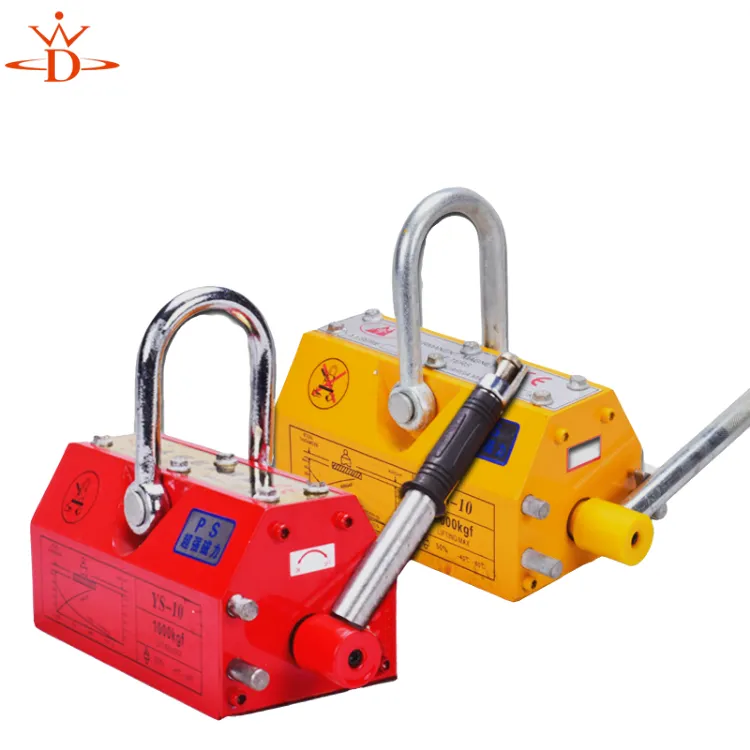Magnetic Lifting Block Design and Applications for Efficient Material Handling Solutions
Magnetic Lifting Blocks Revolutionizing Heavy Load Handling
In today’s fast-paced industrial environment, efficient handling of heavy loads is crucial for the success of manufacturing and logistics operations. Traditional lifting methods, often reliant on cranes, hoists, and other mechanical devices, can be cumbersome, time-consuming, and pose safety risks. However, innovation in lifting technology has led to the development of magnetic lifting blocks, providing an effective solution for businesses that require efficient load handling and transportation.
What are Magnetic Lifting Blocks?
Magnetic lifting blocks are devices that utilize magnetic forces to lift and move ferromagnetic materials such as steel and iron. Equipped with powerful permanent magnets or electromagnets, these blocks can securely attach to heavy metal objects. The simplicity of the operation—generally as easy as turning on or off a switch—makes them a popular choice in various industries, including manufacturing, construction, and logistics.
How Do They Work?
The working principle of magnetic lifting blocks revolves around the fundamental properties of magnetism. Permanent magnetic blocks use strong rare-earth magnets that create a magnetic field, allowing them to attract and hold metal objects securely. Electromagnetic lifting blocks, on the other hand, use electricity to energize the coils within the device, generating a magnetic field that can be turned on or off as needed.
This versatility enables operators to handle different types of materials with ease. When an object is positioned under the lifting block, the magnetic field activates, creating a secure bond that allows for the transport of heavy loads without the need for straps or chains. This reduces loading times and minimizes the chances of accidents associated with securing and releasing heavy objects.
Advantages of Magnetic Lifting Blocks
1. Efficiency One of the primary benefits of using magnetic lifting blocks is their ability to significantly speed up the lifting process. Since they do not require additional rigging or slings, operators can attach or detach materials quickly, enhancing overall workflow and productivity.
magnetic lifting block

2. Safety Safety is paramount in any industry, especially when dealing with heavy loads. Magnetic lifting blocks reduce the risk of accidents associated with manual lifting or the use of slings that may slip. With a secure magnetic grip, the likelihood of materials falling or being mishandled is significantly minimized.
3. Versatility Magnetic lifting blocks can handle a wide variety of materials and shapes. Unlike conventional lifting equipment that may be limited to specific types of loads, magnetic blocks can effectively lift sheet metal, coils, and other irregular shapes.
4. Space Efficiency The compact design of magnetic lifting devices allows for easy storage and mobility. They can be used in tight spaces where traditional lifting equipment might be impractical.
5. Reduced Wear and Tear Not only do these devices eliminate the need for chains and slings, they also minimize wear and tear on lifting equipment. This prolongs the lifespan of both the lifting blocks and the materials being moved.
Applications Across Industries
Magnetic lifting blocks find applications in various sectors. In manufacturing, they are utilized for lifting steel plates and components during assembly processes. In the construction industry, they facilitate the movement of large beams and metal structures. Logistics companies also benefit from magnetic lifting technology when loading and unloading trucks or containers, optimizing the entire supply chain process.
Conclusion
As industry continues to seek more efficient and safer methods for handling heavy loads, magnetic lifting blocks provide a forward-thinking solution that is transforming the landscape of material handling. With their ability to streamline operations, improve safety standards, and enhance productivity, magnetic lifting blocks represent a significant advancement in lifting technology. As businesses increasingly embrace innovation, these devices are poised to become a standard tool in industries around the globe, shaping the future of heavy load handling.
-
Unlock Seamless Relocation with Our Heavy Equipment Moving ExpertiseNewsJun.06,2025
-
Unleash Unrivaled Flexibility with Our Adjustable Gantry CraneNewsJun.06,2025
-
Unleash Heavy-Duty Efficiency with Our Industrial Gantry Crane SolutionsNewsJun.06,2025
-
Revolutionize Steel Handling with Our Magnetic Lifter RangeNewsJun.06,2025
-
Master Equipment Mobility with Premium Machinery Mover SolutionsNewsJun.06,2025
-
Elevate Your Material Handling with Magnetic Lifter TechnologyNewsJun.06,2025
-
YS Permanent Lifting Magnets: The Smarter Way to Handle SteelNewsMay.22,2025
